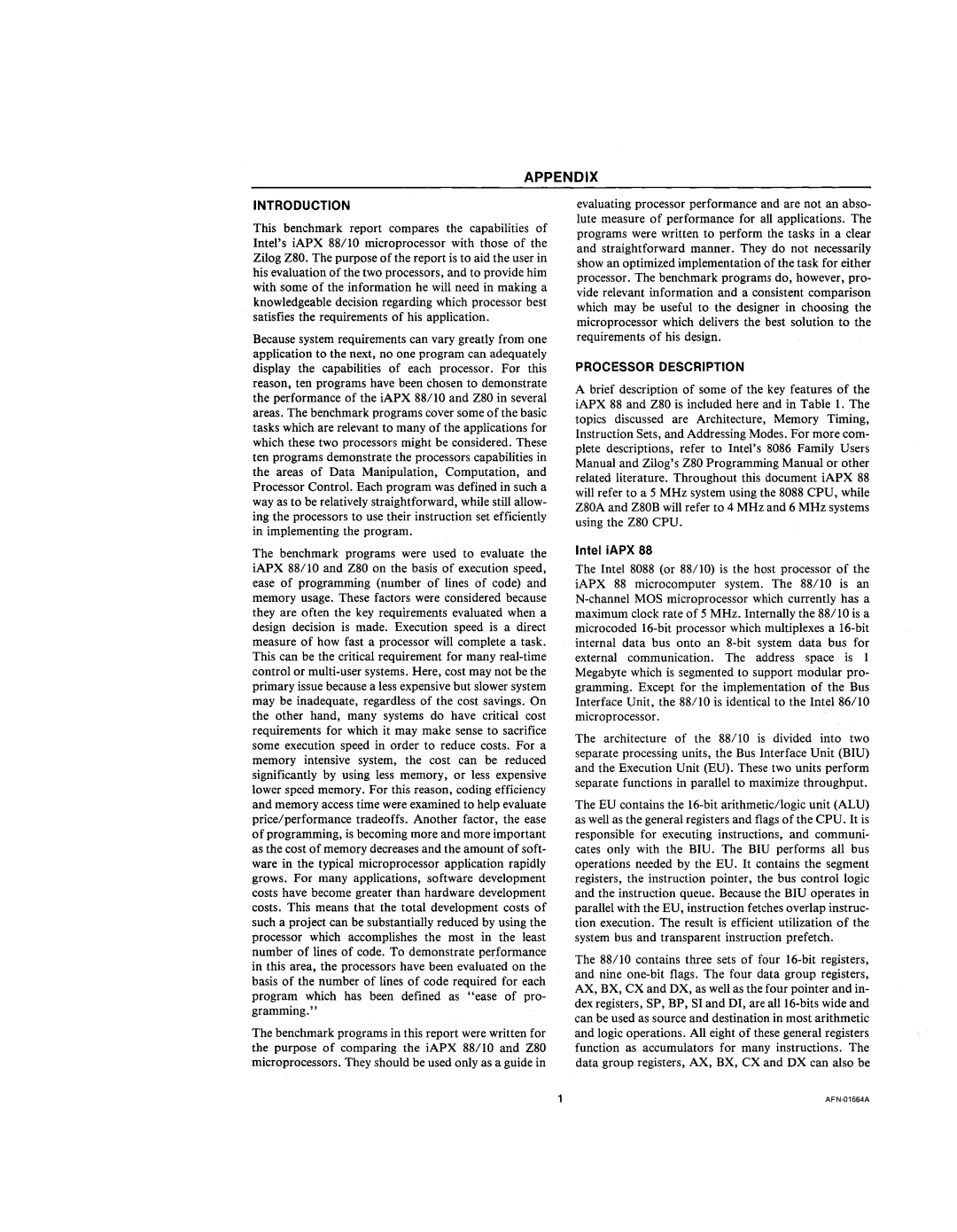
APPENDIX
INTRODUCTION
This benchmark report compares the capabilities of Intel's iAPX 88/10 microprocessor with those of the Zilog Z80. The purpose of the report is to aid the user in his evaluation of the two processors, and to provide him with some of the information he will need in making a knowledgeable decision regarding which processor best satisfies the requirements of his application.
Because system requirements can vary greatly from one application to the next, no one program can adequately display the capabilities of each processor. For this reason, ten programs have been chosen to demonstrate the performance of the iAPX 88/10 and Z80 in several areas. The benchmark programs cover some ofthe basic tasks which are relevant to many of the applications for which these two processors might be considered. These ten programs demonstrate the processors capabilities in the areas of Data Manipulation, Computation, and Processor Control. Each program was defined in such a way as to be relatively straightforward, while still allow- ing the processors to use their instruction set efficiently in implementing the program.
The benchmark programs were used to evaluate the iAPX 88/10 and Z80 on the basis of execution speed, ease of programming (number of lines of code) and memory usage. These factors were considered because they are often the key requirements evaluated when a design decision is made. Execution speed is a direct measure of how fast a processor will complete a task. This can be the critical requirement for many
The benchmark programs in this report were written for the purpose of comparing the iAPX 88/10 and Z80 microprocessors. They should be used only as a guide in
evaluating processor performance and are not an abso- lute measure of performance for all applications. The programs were written to perform the tasks in a clear and straightforward manner. They do not necessarily show an optimized implementation of the task for either processor. The benchmark programs do, however, pro- vide relevant information and a consistent comparison which may be useful to the designer in choosing the microprocessor whiCh delivers the best solution to the requirements of his design.
PROCESSOR DESCRIPTION
A brief description of some of the key features of the iAPX 88 and Z80 is included here and in Table 1. The topics discussed are Architecture, Memory Timing, Instruction Sets, and Addressing Modes. For more com- plete descriptions, refer to Intel's 8086 Family Users Manual and Zilog's Z80 Programming Manual or other related literature. Throughout this document iAPX 88 will refer to a 5 MHz system using the 8088 CPU, while Z80A and Z80B will refer to 4 MHz and 6 MHz systems using the Z80 CPU.
Intel iAPX 88
The Intel 8088 (or 88110) is the host processor of the iAPX 88 microcomputer system. The 88/10 is an
The architecture of the 88/10 is divided into two separate processing units, the Bus Interface Unit (BIU) and the Execution Unit (EU). These two units perform separate functions in parallel to maximize throughput.
The EU contains the
The 88/10 contains three sets of four
